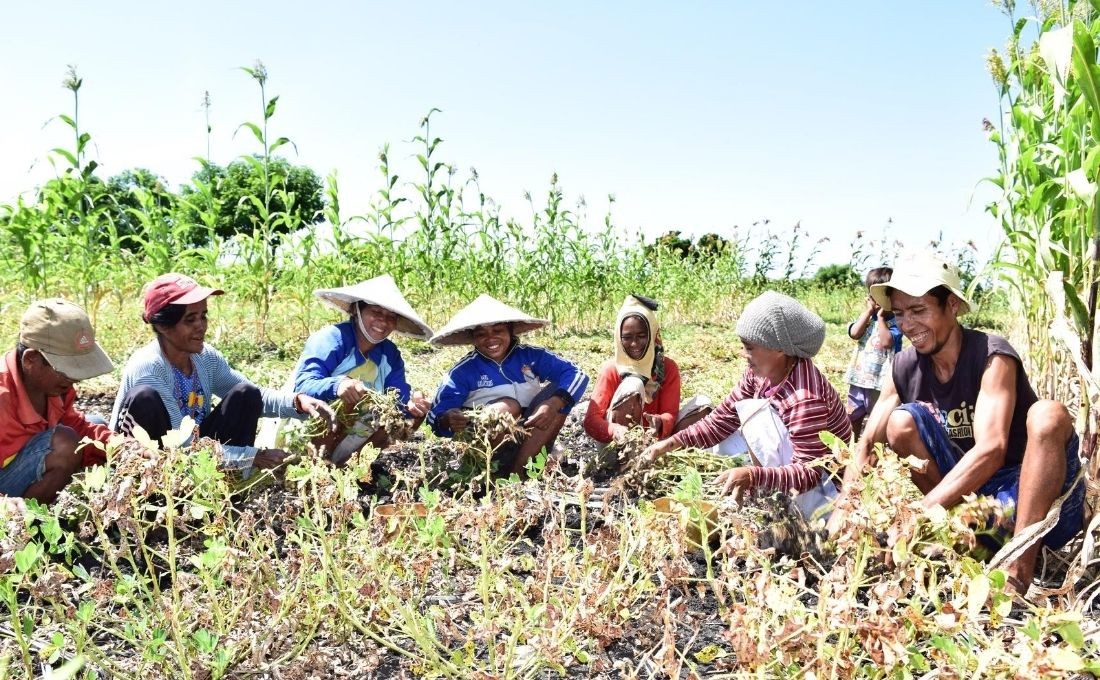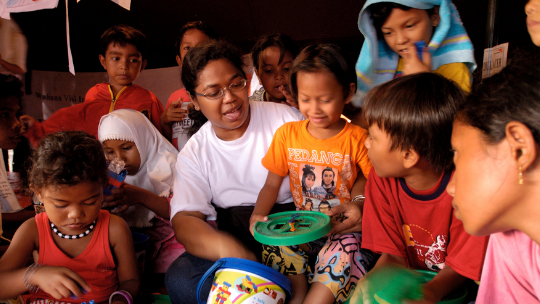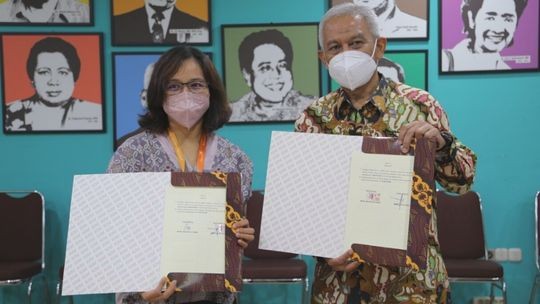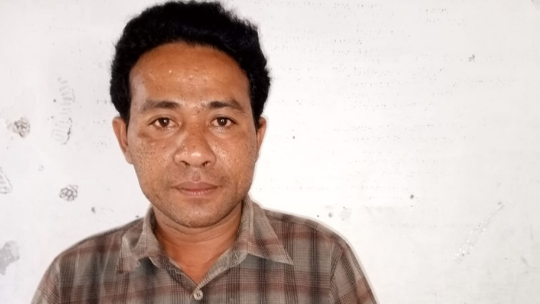Using GAP to Save Seedlings, and Increase Harvest Sacks

Peanut plants look neatly lined up in the garden area of ??75 are owned by the mother of 3 children, May Atambaru (35 yo). In her garden, there was no grass clustered because they often do weeding for two times before finally harvesting.
Joining the Himbuluri Sub 3 group of Praibakul Village, she and four members of the group carried out planting, weeding, and harvesting activities together, from one group member's garden to another group member's garden. All group members whose gardens located around her gardens have begun to practice some of the Good Agricultural Practices (GAP) techniques.
GAP technique was shared by Indonesia Rural Economic Development (IRED) implemented by Wahana Visi Indonesia Sumba Timur Program Area in collaboration with the Injuwatu Sumba Foundation (YIS), funded by the Australian Government (DFAT) through World Vision Australia (WVA).
"I did GAP practice on peanuts plant, such as making runs, arranging 20x40 cm spacing, using two seedlings per hole, and spraying liquid organic fertilizer on plants that are not fertile in this year," said May Atambaru, who known as Mama Figo.
Mama Figo admitted that by practicing the use of 2 seedlings per hole, she was able to save on peanut seeds.
"Last year for this 75-hectare plot of land, I needed up to 50 kg of bean seeds, while this year, I only needed 35 kilos of peanut seeds," she compared.
Although the method of planting peanut using the GAP technique she had done, the feeling of doubt to get a good harvest could haunt her because of the very short rainfall in her village. Moreover, some peanut diseases that cause peanut rot and ground caterpillar pests also attack the plant.
"At one time, I gave organic pesticides which we made together with other group members," she said.
It turns out after she harvested it last May, the results were very reassuring. She and her family managed to get 23 sacks of 35 kilos per kilo or 805 kg. When compared to last year, where she only used the technique of rowing in her farming land, she collected as much as 540 kg of peanuts.
"It was around 160 kg that I sold directly with its shell at the time of the harvest to buy various household needs and also for the needs of school children. It only costs IDR 10 thousand per kilo. While other crops are still stored for sale in August or September when peanut prices start to higher. At that time, we will sell the unshelled peanuts then," she explained excitedly.
Seeing these results that were far beyond her expectations, making Mama Figo will continue to practice the GAP techniques that she had done and plan to expand her grasslands.
Written by: Uliyasi Simanjuntak, staff of IRED Project Wahana Visi Indonesia



